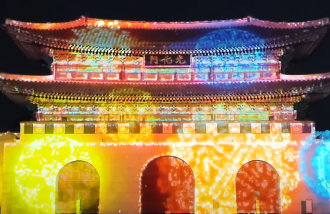[Editorial] Improvement of the Seomjin River
[Editorial] Improvement of the Seomjin River
Posted January. 28, 2009 07:06,
The Seomjin River, which originates from Mount Palgong in North Jeolla Province and flows into Gwangyang Bay, boasts scenic beauty and clean water. With a length of 212 kilometers, the Seomjin is considered one of the countrys major rivers along with the Nakdong, Han and Geum. Due to a scarce population along the river and geographical factors, however, it was excluded from the government improvement project for rivers. Instead, the Yeongsan River, which stretches only 115 kilometers, got the nod.
Land, Transport and Maritime Affairs Minister Chung Jong-hwan said the government will consider including the Seomjin in the project after a master plan is announced in May. Describing the Seomjin as a well-preserved river with a large amount of water, Chung said the government will expand space that allows people to enjoy the waterfront. Though belated, it is reassuring to know that the Seomjin will become part of the waterway redevelopment plan. If properly redeveloped, the river will be a world-class tourist destination because it flows around Mount Jiri, one of the countrys most beautiful mountains, and through a slew of cultural relics such as Hwaeom Temple in Gurye, South Jeolla Province, and Ssanggye and Yeongok temples in Hadong, South Gyeongsang Province.
The village of Pyeongsa, the setting for the historical saga Toji (Land) by the late novelist Park Kyung-ni, nestles at the edge of the Seomjin. Though the novel depicts wooden boats passing an estuary in Hadong sailing up the river and reaching a dock in Pyeongsa, river transportation has long disappeared due to soil deposition in the riverbed and the development of land transportation. The Seomjins clean water remains intact, however, with water from Mount Jiri flowing into the river. Sweetfish, which thrive in clean water only, can be seen swimming in the river.
The Seomjin improvement project should place priority on creating an eco-friendly space by preserving its scenic beauty and clean water. In his poem Seomjin River, Kim Yong-taek praised the river, saying, At the riverbank at dusk/ lies the bush of clover flowers that looks like white steamed rice / and that of astragalus flowers that looks like a charcoal fire / at a small riverside not found on any map. The government must take extreme care not to undermine this graceful natural environment. If the Seomjin is improved and turns into a world renowned river, the waterway flowing across the Jeolla and Gyeongsang provinces as described in the pop song Hwagae Open Market by Cho Yeong-nam will help raise national pride, boost regional harmony, and increase the incomes of nearby residents.







